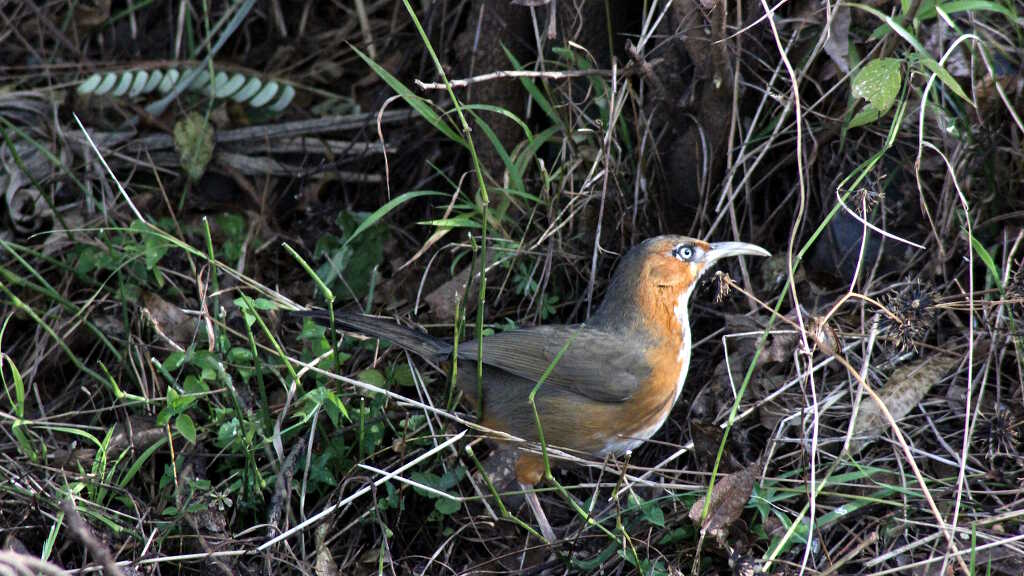
Pomatorhinus erythrogenys (Rusty-cheeked scimitar babbler)
The Rusty-cheeked scimitar babbler (Pomatorhinus erythrogenys) is a distinctive, vocal bird species found in the forested landscapes of the Great Himalayan National Park (GHNP). Known for its loud, melodious calls and distinctive facial markings, this bird is a favorite among birdwatchers exploring the mid-elevation zones of the western Himalayas.
Physical Description and Identification
The Rusty-cheeked scimitar babbler is medium-sized, measuring around 22 cm in length. Its most notable features include a long, down-curved bill resembling a scimitar, rust-colored cheeks, and a warm brown body. A pale whitish throat and prominent eye stripe contrast sharply with the richer tones of its plumage. These babblers often move in pairs or small groups, making their presence known with a series of rich, fluting calls.
Habitat in GHNP
Within the Great Himalayan National Park, this species typically inhabits dense shrubs, undergrowth, and secondary forest edges, especially between elevations of 1,200 and 2,500 meters. It is often found in oak, pine, or rhododendron forests, foraging close to the ground for insects, beetles, and other invertebrates.
Behavior and Ecology
The Rusty-cheeked scimitar babbler is an energetic forager, often rummaging through leaf litter and low vegetation with its long bill. Though secretive by nature, it becomes conspicuous during the breeding season through its frequent vocalizations. These birds are non-migratory and maintain small territories year-round.
| Common name | Rusty-cheeked Scimitar Babbler |
| Scientific name | Pomatorhinus erythrogenys |
| Family | Timaliidae |
| Description | It is a resident bird of Himalayas. It has rufous lores and ear-coverts. Rufous down sides of neck, and breast. It is commonly found in an altitudinal range of 1500m and prefers forest and thick shrubby area for their living. |
Breeding and Conservation
Breeding occurs from April to July, with nests typically hidden in low vegetation or forest underbrush. Despite habitat changes in parts of its range, the species is classified as Least Concern due to its adaptability and wide distribution across the Himalayan region.
The undisturbed environments of GHNP play a crucial role in sustaining healthy populations of this species and many other forest birds.



